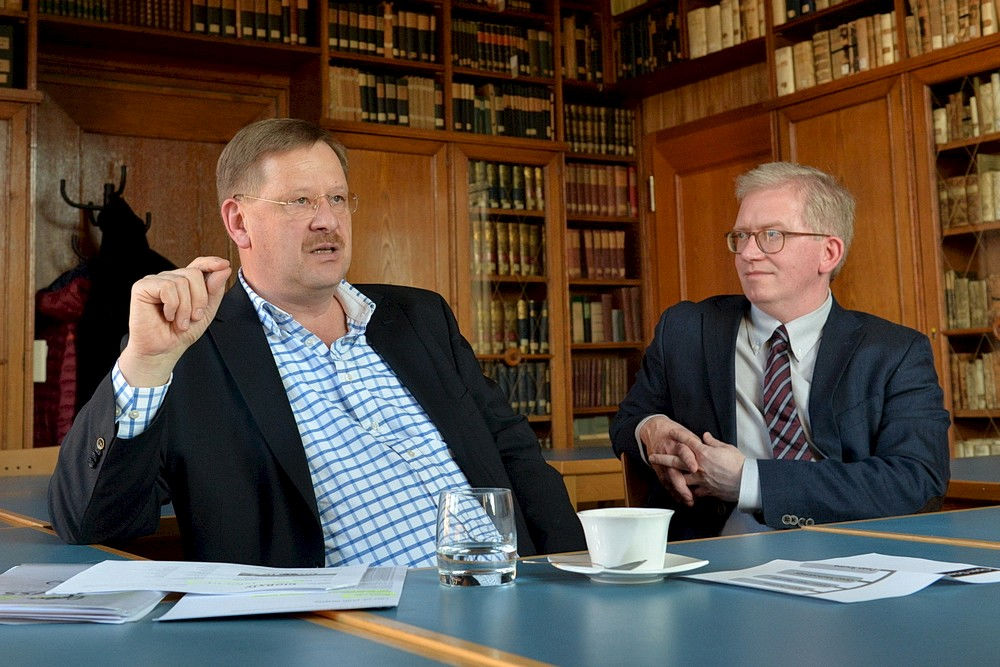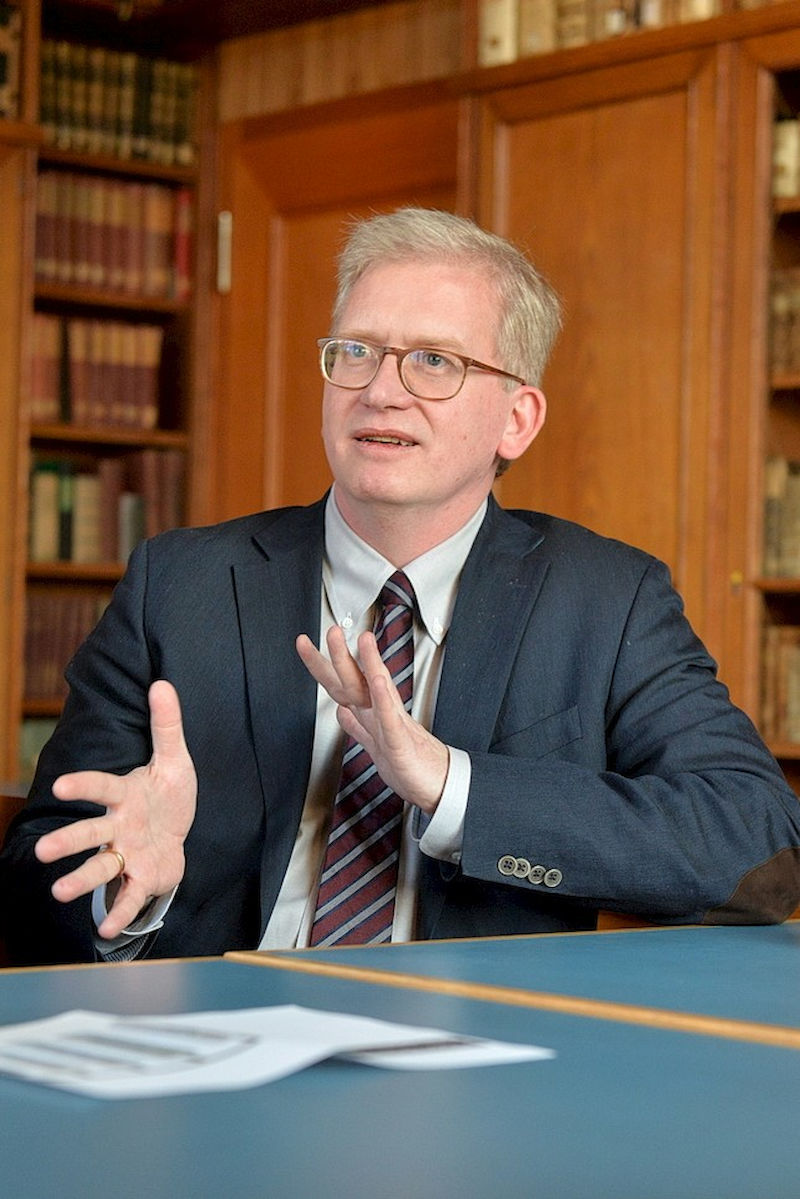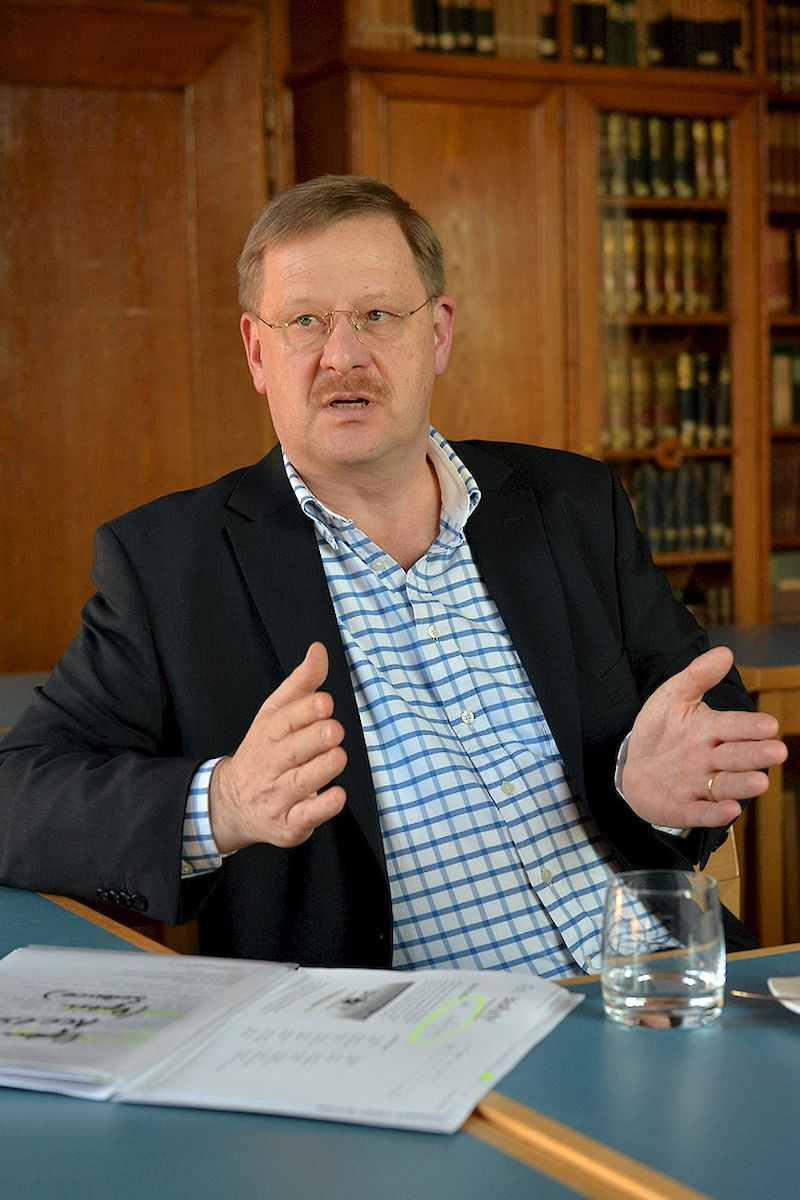Making science freely available: Open access publishing

How would you explain Open Access?
Stephan Feller: Open access means that research findings are made accessible to the public. The internet has enabled content to be disseminated quickly. You no longer have to go to the library or subscribe to a journal. The basic idea is that a lot of what goes on in science is publicly financed and it doesn’t make much sense to limit public access to data that was generated largely by public funds just because publishing them makes commercial sense.

Mr. Artmann, you are from the field of philosophy. Is open access just as relevant for the humanities as it is for the natural sciences?
Stefan Artmann: If you look at how things currently stand, open access is more important for the natural sciences. The debate shows that natural scientists, and particularly life scientists, are the vanguards of the open access movement. This doesn’t mean, however, that the humanities remain untouched by it. It’s just that publication habits are different. In the humanities, book publication still takes centre stage. That is a major challenge: what do we do in the case of monographs? And how do we treat the often very tight-knit relationship between author and publishing house? Several small publishing houses are historically very closely linked to specific subjects.
What role does open access play in your research for you as a scientist?
Feller: I was at Oxford for a long time where you had nearly everything at your fingertips in the reference library. Yet, even at Oxford you only have access to 90 per cent of the journals through subscriptions - fees paid centrally by the library, or through access rights that the publishers grant to the university. In Halle the important journals that we need for our work are simply not freely accessible. Of course you can buy the article. The problem is that you are often unsure whether the paper is even important. That means you pay 50 euros just to find out within two minutes that the study is nonessential to your work. That is not very expedient. In the natural sciences it is becoming increasingly important to have quick access.
Does this apply to your work as well, Mr. Artmann?
Artmann: These days you are disappointed if you are unable to access an article in a public database or an open access journal which is two or three years old. Younger colleagues and students have similar expectations to those prevailing in the natural sciences. Open access also promotes the internationalisation of research. Many subject areas in the humanities are strongly characterised today by national research traditions. This has been deconstructed, not least because of digitalisation. Now a Google search enables me to much more quickly find a journal on my topic that was published, for example, somewhere in the USA. It used to be that you often only heard about it by chance.
To what extent is open access relevant for students?
Feller: There are some subjects that are developing so quickly that textbooks are nearly out of date by the time they are released. In this case, freely accessible review articles, which allow you to prepare for specific course content, are used in the seminars instead of books. This basically only works when the content is online and freely accessible.
Artmann: Another important development is that in the qualification phase – be it a master’s thesis, doctoral thesis or habilitation – students are given the chance to at least publish their paper in their university’s own repository. This allows the papers to be searchable worldwide and to have higher visibility.
Unlike with journals such as Nature or Science, if I want to publish my paper in an open access journal, I, as the author, am charged money. Doesn’t this dissuade scientists who are unable to afford open access publication?
Feller: That can pose a problem. As an editor-in-chief I have a certain number of free passes. When I absolutely want to publish a high-quality paper in my journal, and the author is a young, up-and-coming researcher without the means to do it, I can still publish the paper. Authors from certain countries are automatically given this opportunity or at least offered reduced rates. Natural science research is basically very expensive. When I have 300,000 euros at my disposal for an experiment or an experimental work, it should also be possible to pay 2,000 or 4,000 euros to cover publication costs.

Journals like Nature only accept around eight percent of all submitted articles – in the case of the open access journal PLOS One, this number is more like 70 percent. What does this say about the filtering function and quality standards of the journals?
Feller: In the field of biomedicine it is relatively easy to differentiate based on impact factors: no one pays any attention to things that are of a very low calibre. PLOS One is relatively stringent and not everything gets published. However the reviewers give the researchers time during the editing phase to replicate their experiments, for example. The strategy of PLOS One is to publish everything that is publication-worthy. This means the topic doesn’t necessarily have to be trendy. But maybe the study is important for someone and they can benefit from it.
Artmann: There is this viewpoint with open access that holds up a reproachful finger and says: then everything can be published. This is a very one-sided view. Open access will enable very different forms of quality assurance to be introduced. This could be, for example, discussion forums for articles at the end of the publication. I think people underestimate the creative possibilities that digital publishing and open access are able to offer. The decision in favour or against open access doesn’t mean that we have to decide for or against the publishing houses. It’s up to the creativity of the publishing houses and how they conduct themselves at a time when the publishing model is undergoing a transformation.
What does the Alliance of Science Organisations do to support this transformation process?
Artmann: As an alliance we have given the scientific system in Germany extensive information about what open access actually is and about its forms, advantages and difficulties. Now, in the second phase, it’s about more intensively exchanging information about the individual stages of transition in the overall scientific publishing industry.
At the end of 2015, the University of Constance decided that scientists at its university should publish their essays in an open access format after one year. Many authors felt patronised. What is your opinion of such requirements?
Feller: In the natural sciences this is done through the funding institutions. This is, of course, difficult during a period of change. When a university implements such a rule, new scientists don’t think anything of it. That’s all they know right from the beginning. Fragmented initiatives that organise everything themselves isn’t such a good idea. I personally think, for example, that the EU needs to become much more involved.
Artmann: There needs to be an across-the-board solution as much as possible, however in Germany and Europe we are still miles away from something like this.
Is there a country that can act as a model?
Artmann: No, it’s more like a patchwork of many different solutions. Neither the European way nor the German way will be about saying green or gold is right. The various scientific disciplines will be given the opportunity to decide for themselves. One prerequisite is that the scientific system has to come to some consensus about how to transition from a subscription model to an open access model.
This year the Leopoldina has taken over the leadership of the Alliance of Science Organisations. Could you give us an outlook on the development of open access?
Artmann: I believe that the debate will become more concrete this year. I think that in Germany the science organisations will coordinate more with regard to open access so that scenarios will develop like those in the Netherlands. There the universities have come together to take joint action. They have been able to negotiate better contractual terms. I could imagine that, in this respect, German science organisations will try to work together to influence the political and legal framework.
What does this development mean for libraries?
Artmann: The university libraries are taking on a new role – not only as a result of open access, but because of the digitalisation of science in general. They are a central depository of knowledge and an institution for scientific communication that is still present in university life. They also deal with the organisation of publishing funds. Once the subscription model finally runs out and the expensive subscriptions no longer have to be paid for, money will be freed up in the libraries. This money can be re-directed to finance the open access publication fees. Then the important task of the library will be: who will receive how much money per year for open access fees? Which criteria have to be established?
Feller: I believe the next generation will increasingly refuse to use texts which they are unable to download. The job of the library will therefore change drastically. For example it will provide work space where people can quietly work with their laptops. Another important point is that you now can become your own publisher. You no longer need a printing press or a sales department. It would be good for science to reclaim these publication activities. Profit margins are enormous in the natural sciences. In effect it’s money that science loses out on.
Open access: taking the green or the golden road?
Today there are many different ways to make specialist literature free, and to make it publicly accessible and utilisable on the internet. When researchers publish their latest papers in an open access journal that fulfils all the requirements of the open access movement, we call it the golden road. These free, open-access publications are usually financed through publication fees which authors or their institutions have to pay. Scientific institutions that have set up publishing funds for this purpose have been receiving support in Germany from the German Research Foundation’s (DFG) “Open Access Publishing” funding programme since 2009.
Even when a scientific paper is initially published in a fee-based journal, the author can also opt for the open access green road, by either providing a copy of the text online or by publishing and storing it in his institution’s digital archive, a so-called repository. Commercial publishing houses have developed another publication model that has, however, come under scrutiny.
In the case of hybrid publications, the paper is published in a fee-based printed journal and is placed online for everyone free of charge. The publisher charges the author publication fees to do this. Institutions that are funded by the DFG programme are not allowed to participate in hybrid journals.
